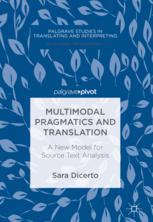

Most ebook files are in PDF format, so you can easily read them using various software such as Foxit Reader or directly on the Google Chrome browser.
Some ebook files are released by publishers in other formats such as .awz, .mobi, .epub, .fb2, etc. You may need to install specific software to read these formats on mobile/PC, such as Calibre.
Please read the tutorial at this link: https://ebookbell.com/faq
We offer FREE conversion to the popular formats you request; however, this may take some time. Therefore, right after payment, please email us, and we will try to provide the service as quickly as possible.
For some exceptional file formats or broken links (if any), please refrain from opening any disputes. Instead, email us first, and we will try to assist within a maximum of 6 hours.
EbookBell Team

4.1
100 reviewsThis book proposes a new model for the translation-oriented analysis of multimodal source texts. The author guides the reader through semiotics, multimodality, pragmatics and translation studies on a quest for the meaning-making mechanics of texts that combine images and words. She openly challenges the traditional view that sees translators focusing their attention mostly on the linguistic aspect of source material in their work. The central theoretical pivot around which the analytical model revolves is that multimodal texts communicate through individual images and linguistic units, as well as through the interaction among textual resources and the text's interaction with its context of reference. This three-dimensional view offers a holistic understanding of multimodal texts and their potential translation issues to help translators improve the way they communicate multimodally across languages and cultures. This book will appeal to researchers in the fields of translation studies, multimodality and pragmatics.